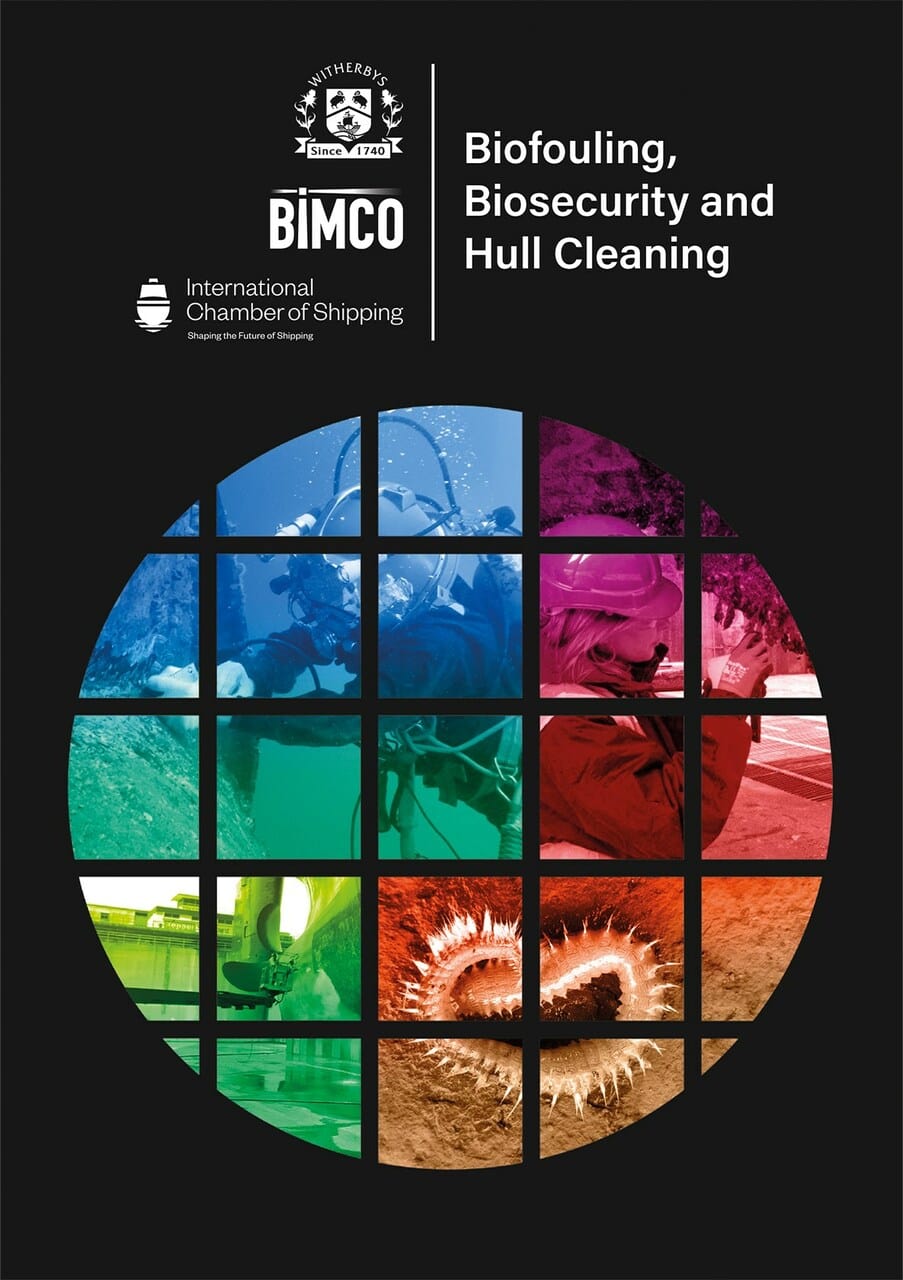
Overview
Biofouling can have a significant impact on ship hydrodynamics and energy efficiency and interfere with efficient operation of internal seawater systems. It can also threaten the marine environment through the transfer of non-native invasive species, or through the use of toxic anti-fouling systems.
This publication identifies ship structures that are vulnerable to biofouling, factors affecting the rate of build-up and the effect of biofouling on performance and operating costs. It briefly discusses a number of environmental research initiatives into the effects of biofouling.
The book looks in detail at biofouling management, including the use of biocidal and non-biocidal paints and coatings, marine growth prevention systems, in-water cleaning and treatment in dry dock.
It sets out current biofouling legislation and guidelines, including IMO’s 2011 Biofouling Guidelines, the International Convention on the Control of Harmful Anti-fouling Systems on Ships (AFS Convention), and individual national and regional biofouling legislation. It provides templates for the Biofouling Management Plan and the Biofouling Record Book.
Finally, it provides a selection of data sheets giving an insight into the spread and capabilities of hull cleaning and inspection companies worldwide.
lang="en-GB"Content
Acknowledgements
PART 1 Background
Chapter 1 Background
-
- What is Biofouling?
- The Establishment of Biofouling
- Microbiologically Influenced Corrosion (MIC)
- Invasive Species
PART 2 Biofouling and the Ship
Chapter 2 Ship as a Carrier
-
- Areas of Attachment on a Ship
- Newbuild Design to Minimize Biofouling
- Operational Profile and Maintenance of the Ship/Marine Structure
- Type of Ship and its Charter Profile
- Operating in Different Environments
- Marine Structures/Devices
Chapter 3 Biofouling and Ship Performance
-
- Effect of Biofouling on Ship Hydrodynamics and Energy Efficiency
- IMO Guidance
- Effect of Biofouling on Ship Hydrodynamics and Energy Efficiency
3.1.2 ISO 19030
-
- Biofouling Cost Effects
Chapter 4 Biofouling Biosecurity and Research
-
- The Effects of Biofouling on the Marine Environment
- The Effects of Biofouling Control and Removal on the Marine Environment
- Environmental Research Initiatives
- The GloFouling Partnership Project
- The TEST Biofouling Project
- The COMPLETE Project
- The BioFREE Project
- The OCEANIC Project
- The Wave and Energy Project (WEP+)
- The Flinders Biofilm Research and Innovation Consortium (BRIC) Project
- The MultiFlex Project
- HCR Project (a CORDIS Project)
- Autonomous Biofouling Inspection Robots Research
PART 3 Biofouling Management
Chapter 5 Anti-fouling Systems (AFS)
-
- Biocidal Paints and Coatings
- Ablative or Soluble Matrix Coatings
- Contact Leaching
- Self-polishing Copolymer (SPC)
- Non-Biocidal and Hybrid Anti-fouling Systems
- Foul Release Coatings (FRC)
- Hard Inert Coatings
- Marine Growth Prevention Systems (MGPS)
- Anodic Copper Systems
- Electrochlorination
- Biocidal Paints and Coatings
Biofouling, Biosecurity and Hull Cleaning
-
-
- Direct Chemical Dosing
-
5.3.4 Ultrasound
-
- Selecting an AFS
- Proper Application of Anti-fouling Coating
- Applying AFS to Specific Niche Areas
5.5.2 Ship Painting Robots
Chapter 6 Ship Cleaning
-
- In-water Cleaning
- Brush Systems
- In-water Cleaning
6.1.2 Soft Tools
6.1.3 Water Jet and Air Jet (Blast) Systems
6.1.4 AFS Resistance to Cleaning
6.1.5 Propeller Cleaning
-
-
- Proactive In-water Cleaning
-
6.1.7 The Future of In-water Hull Cleaning (IWHC)
-
- Cleaning/Maintenance in Dry Dock
- Hydroblasting
- Cleaning/Maintenance in Dry Dock
6.2.2 Abrasive Blasting
-
- Hull Cleaning and Ship Operations
PART 4 Legislation and Guidelines
Chapter 7 The 2011 Biofouling Guidelines
-
- Design and Construction
- Anti-fouling Systems (AFS)
- Niche Areas
- In-water Operations: Inspection, Cleaning and Maintenance
- In-water Inspection
7.4.2 In-water Cleaning and Maintenance
-
- The Biofouling Management Plan and Record Book
- The Biofouling Management Plan
- The Biofouling Management Plan and Record Book
7.5.2 The Biofouling Record Book
-
- Reviewing the 2011 Biofouling Guidelines
Chapter 8 Regulations for the Control of Anti-Fouling Systems
-
- The International Convention on the Control of Harmful Anti-fouling
Systems on Ships (AFS Convention)
-
- UK Regulations
Chapter 9 National and Regional Biofouling Legislation
-
- Australia
- New Zealand
- Acceptable Measures
9.2.2 Documentation
9.2.3 Non-compliance
-
- United States of America
- Federal Law
- Individual US State Biofouling Requirements
- United States of America
|
9.4.1 |
California |
|
|
9.4.2 |
Hawaii |
|
|
9.4.3 |
Maine |
|
|
9.4.4 |
Washington |
1. Polar Waters
2. Belgium
3. Chile
Appendices 83
Appendix 1 Template of a Biofouling Management Plan Courtesy of IMarEST and IPPIC
Appendix 2 Template Form for a Biofouling Record Book
Appendix 3 Hull Cleaning Companies
Data Sheet Icons
Appendix 4 Ship Wetted Surface Area (WSA) Information
References
lang="en-GB"






